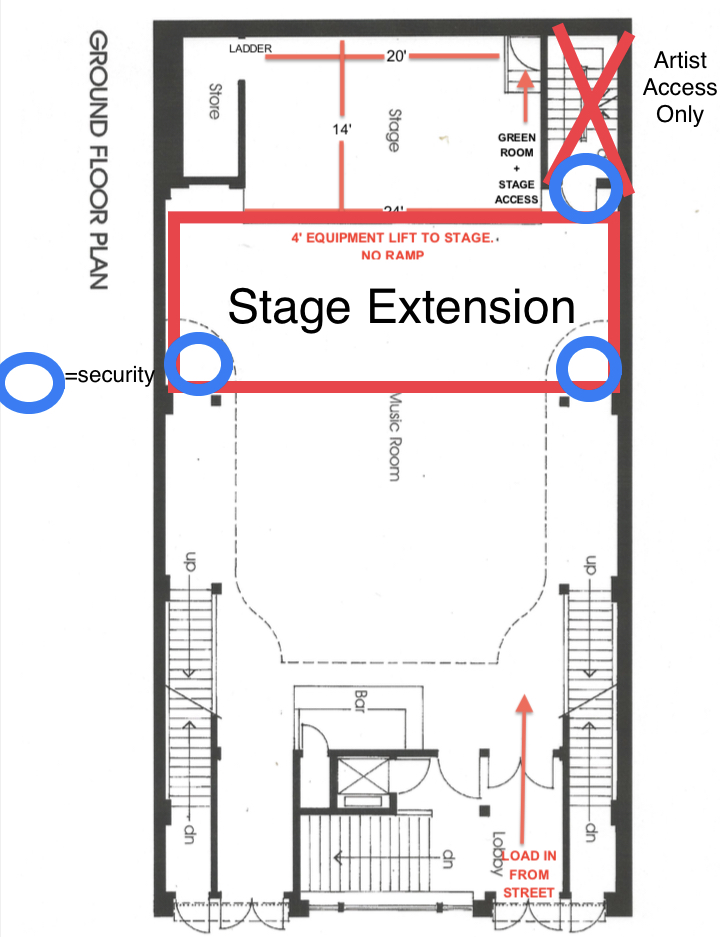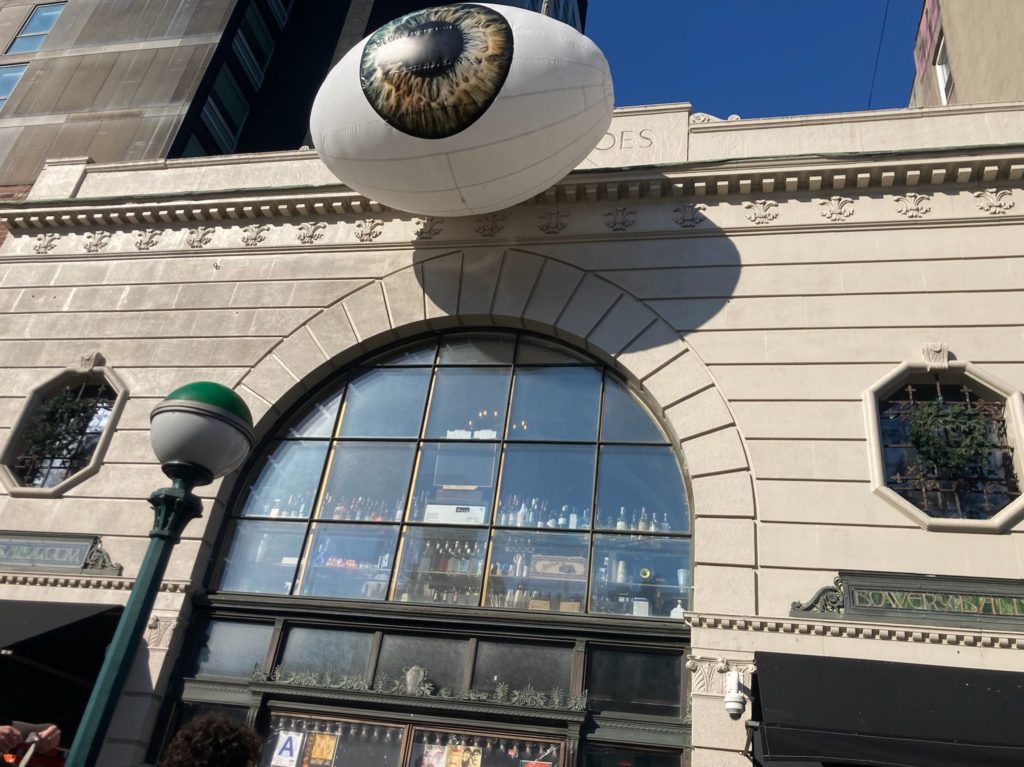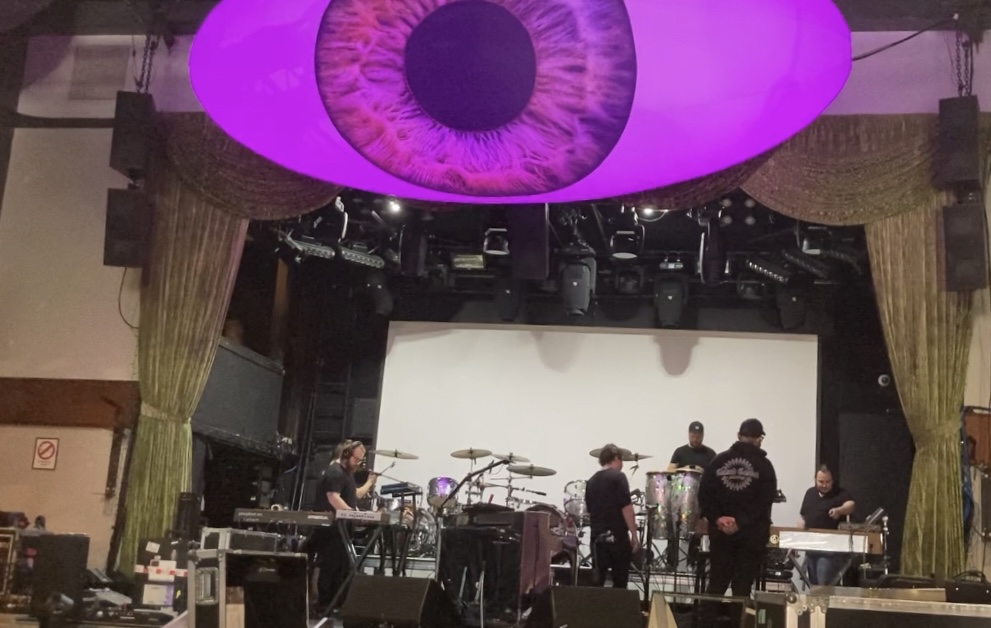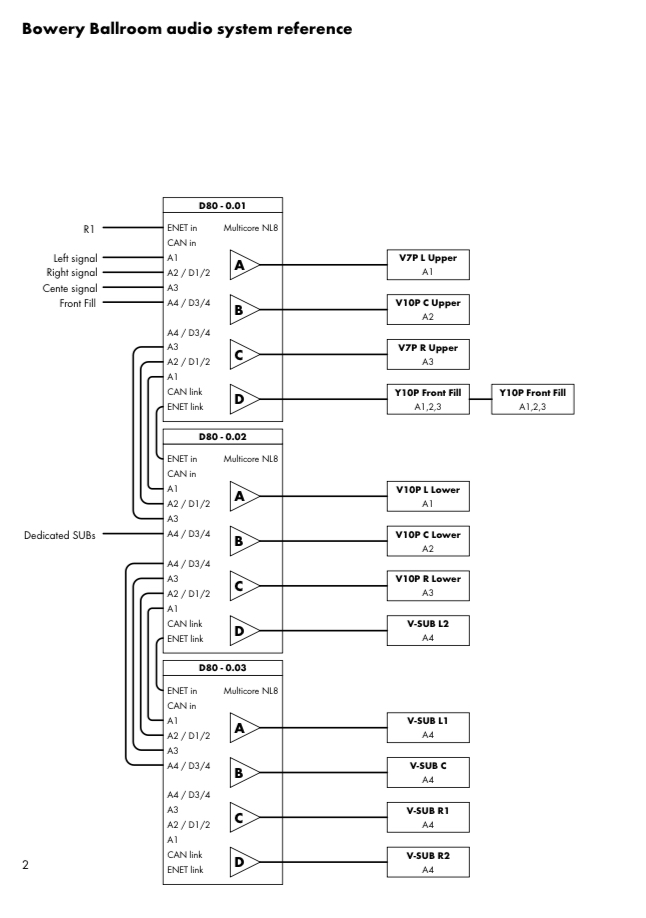This Show Must Go Off Episode 8
The Arcade Fire recently wrapped an intimate 4-night residency at the Bowery Ballroom to benefit the people of Ukraine, and the production was spectacular. Every detail was memory-making. From the scavenger hunt for tickets in New York City’s parks to giant inflatable eyeballs, to surprise special guests and street parades that spilled down into the subway, this was an unforgettable weekend.
Pre-production
A phone call came in roughly 6 weeks before the show date. A production manager of an unknown artist would be flying into New York and needed to arrange a walkthrough of the venue. On the day of our initial meeting, the stage was set with a 5-piece rock band, and minimal production. A leisurely concert, compared to what was to come. I was greeted with hugs and genuine warmth as if he sensed my racing thoughts of inadequacy. “This is too small” “it will never fit” “Whatever you do, don’t make the shoebox joke” [the venue used to be an old shoe store]. When we got right to it, he said something to the effect of “This isn’t bad”, a small sigh, and then came talk of all of the logistics.
Chris Roberts is a brilliant Production Manager. How someone can take a band’s wildest dreams, entirely impractical, borderline impossible, and potentially illegal in some states, and say “yes, we will figure it out” is still mystifying to me. We were there in person to talk through the reality of fitting a stadium production, into a rock club one-tenth of the capacity. The crux of these shows would include a giant inflatable eyeball that must be rigged from the venue ceiling. It was important to do so in a way that would not impede sightlines, use of the PA system, or use of the venue HVAC and sprinkler system. If inflated using a noisy air compressor or fan, it would require constant power, as well as data lines for lighting. If inflated using gas, it could violate local laws and OSHA regulations. Production would include building a stage extension of 6 feet and closing off our rear stairwell access for patrons. This would allow for backline tech accommodation. Backline, audio, and “The Eye” would arrive in a tractor-trailer. Staging, lighting, drape, and barricade would be sourced locally. For production alone, the house was looking at a 20-person crew [up from our usual 4] and the Artist directly employs at least another 16.
A similar style of show would be carried out in New Orleans before arriving here. It was my hope that a trial run would help to alleviate some of the shock on both of our crews.
By the week of the show, we had settled on The Eye being rigged from our PA I-beams. It would impede just 1 of the 6 boxes of our main PA hang. Audio and Lighting control would all be housed in the balcony. Our upstairs bar would double as catering for a majority of the afternoons.
Eve of Show
There was one final walk-through the day prior to the show. The PM asked what time the band that night was loading in. “4 pm.” I said, “Remember those days?” To which he responded. “No. God. No, I don’t…. Actually, those were the days I was playing in a band, and showing up to a pub with the backline.” We laughed in a knowing way. What was to come would be new in a lot of ways for all of us.
Their crew was set to load in at 7 am the following morning. Attached is my draft of a day sheet for staff.
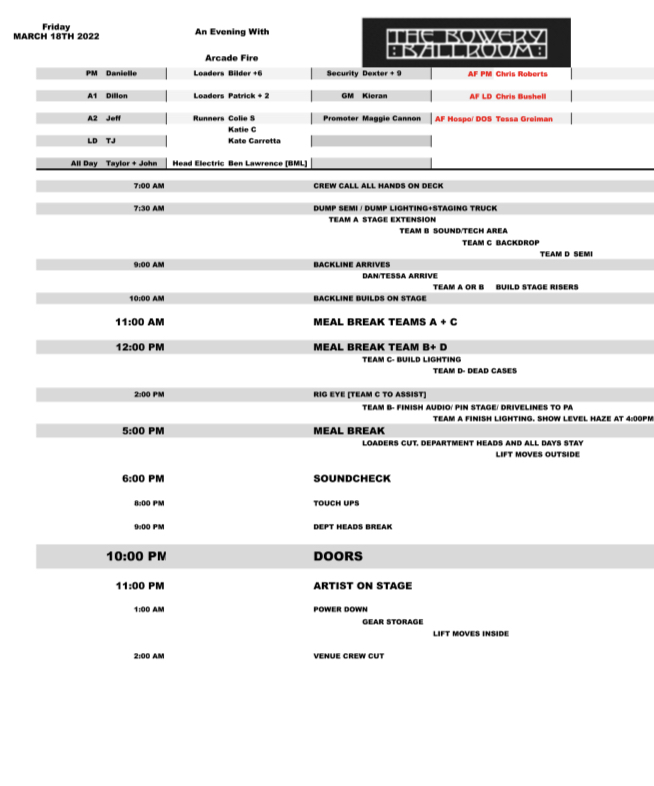 Show Days
Show Days
The following days followed a more manageable schedule for the venue, and I was able to scale back to my usual production staffing. My A1/FOH directly assisted the system tech with the D&B system calibration and EQ and would monitor the amps during the performance. My A2 ensured the stage had power each day and worked closest with the Artists’ stage manager to ensure everything was safe and prepped for doors. My LD worked directly with the Artists’ LD to make sure the lighting rig functioned well each day and supervised the use of atmospherics. We maintained control of the house lights for pre and post-performance.
I tried to keep busy, and our hands dirty to avoid boredom and exhaustion. The hardest part of working with a self-contained event is to pivot from work that is so mentally and physically stimulating, to strictly supervisory. To challenge ourselves, we did attempt to rig and clean a 2nd giant inflatable eyeball on the venue’s roof, but ultimately the weather and insufficient anchor points kept it from gaining any real traction.
A fun challenge for my A1 was to reconfigure our PA system to run via analog drivelines, rather than the AES we currently use. Many of our guest consoles are still accustomed to analog drive lines, which makes sense for uniformity and flexibility. Every PA will have analog inputs, and it grants you pass-through in places where multiple consoles are present. I have come to revere their engineer Jim Warren and system tech Mat over the years of concert touring and was beyond excited to hear his mix, so I extended the courtesy of driving the PA directly [meaning our console would not pass his drive lines through to the PA]. Our old cable infrastructure remained from our analog Midas Heritage console. We followed the schematics from our initial D&B install and then reverted the processor data and amp settings. The inflatable eye completely blocked our center upper point source box, which we turned off, and the room was tuned with the eye inflated.
My job roles and responsibilities began to blur. I had a heavier role in financial reporting than I typically do during our shows. I was also meant to supervise and support 3 runners, merchandise sellers, lift operators, and loading staff. Even our Talent Buyer got involved in a new way, distributing passes directly to fans during the afternoons. Of the many to aid us from the artists’ side were Tessa Greiman, Josh Smith, and Chris Roberts. Tessa is an extraordinary manager for artist production. She interacted with the venue staff in the most respectful and unifying way. Jobs needed to get done, and quickly, but Tessa never let anyone feel unappreciated or unsupported. Josh was the stage manager whose impeccable attention to detail and planning I leaned on heavily. By the end of our 4 days, he caught on to the Bowery magic, where things happen in a strange New York rhythm you cannot put your finger on, but is noticeably different than most cities. He worked in complete sync with his techs and made the days easy for my department heads. The key part of this wild adventure was Chris, and his ability to really see 10+ Arcade Fire members and guests on [and off] our stage. Seeing him making it all happen, one surprise after another deserves my deepest appreciation and trust.
The Show must go on and on and on
One common theme that kept coming up as the 4 days went on, is health and wellness. I think many of us can agree– it is nice to return to work after a pandemic industry-wide shutdown, but we can improve upon the conditions so that when we ask someone to work a 16 hour day it is met with a mutual level of support and compensation for the task.
I thought of our respective crews. The way their team cares for one another, and what I could be doing better. I couldn’t help but envy the hotel accommodations that cut your commute time out completely. It is a privilege to be able to have a walking commute to work, and one that supports mental health. Some of my staff do not live in New York City, and those who do can spend upwards of 90 minutes commuting to the venue via public transportation.
Meal breaks and healthy food options are critical to maintaining focus and a positive attitude throughout the day. Where a majority of our staff meals are walk away, their team had regular meals together, creating makeshift kitchens from our bars. Adding healthy non-perishable snacks that are easy to store is something I have incorporated as a result of these shows.
One final important factor is a private place to take a break. In our venue, a private corner to shut off your brain is very hard to come by. When you operate in a public space, there is this assumption of always being on the clock, and worse- being thought of as lazy by sitting around and not doing anything. It is an industry issue that needs to change, and a hospitality concern that requires a deeper look and solution.
The Load Out
Each night the band surprised everyone by taking to the crowd for encores that spilled out into the streets. The last night I let out an audible laugh as my crew stood next to the tractor-trailer, cases emptied and along the sidewalk, as the band lead hundreds of fans through our path of travel. It felt inclusive and exciting, and all just a bit silly.
While the band was finishing their last performance on our stage, we had started to empty cases onto the street and sidewalk, separated into departments [Lighting, Audio, Backline, and personal]. When we were able to get into the venue to work, we started breaking down backline and lighting. The stage extension came down as tech worlds were packed up in the wings. Next, we were able to get the scissor lift back into the building to undo the rigging of the eye, and crews were then split between audio, and truck pack. Audio consoles with their racks needed to be carried down the flight of narrow, carpeted steps as backline was loaded into the truck. Lighting and staging would leave on the vendor truck, and a few pieces of equipment would get picked up the following day. We all surprised ourselves by completing loadout in 2 hours’ time. Without much more than a moment to catch our breath, we were back into another show production 12 hours later. If I did not say it enough in person, I extend a heartfelt thank you to everyone who helped make these shows happen and their incredibly hard work.
I would like to end this on a more personal note regarding the venue. This spring, the Bowery Ballroom will be welcoming Stef Schwartz back into our family as the club’s General Manager. I could not be more excited to work alongside such a talented and valued person in the concert community. I am very much looking forward to an incredible feeling of equity and respect, and how this will positively shape all of the shows. It feels incredible to do this job with a peer and someone whose compassionate drive can be felt at every venue they have been a part of. At a venue of our size, our two positions work more closely than most. Our working relationship should mirror what I saw with Chris and Tessa from the Arcade Fire team. Synchronicity and support even in the really hard moments.
I held onto the secret of The Arcade Fire Coachella surprise performance for a whole month and was excited to see it was received with the same awe and amazement as I saw here in New York. I cannot wait for the band’s year ahead, and I wish the artist and crew many memorable adventures.
